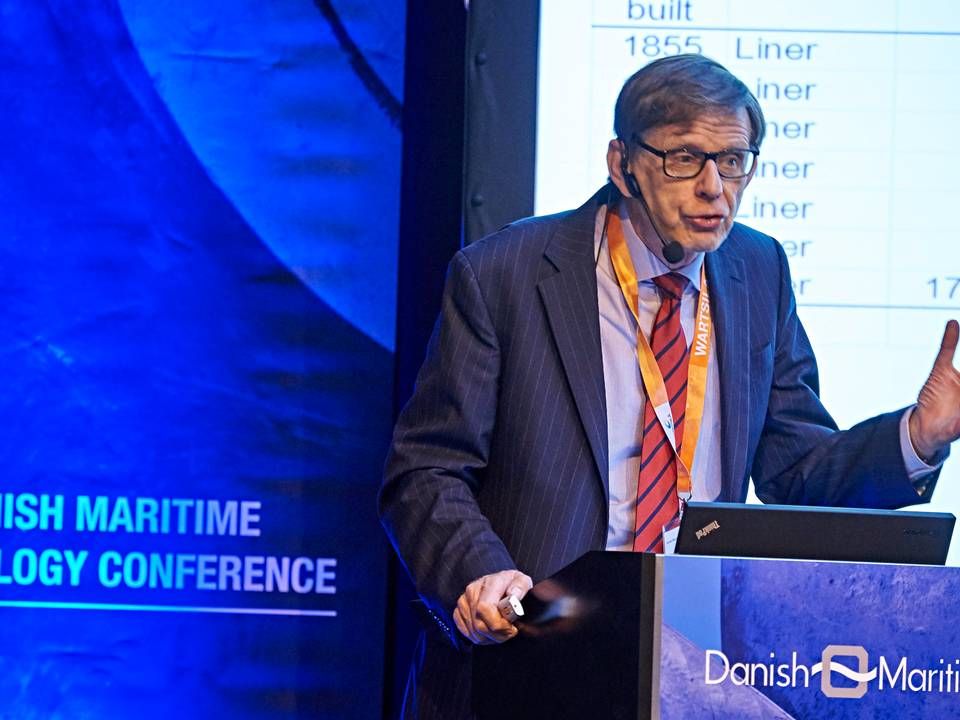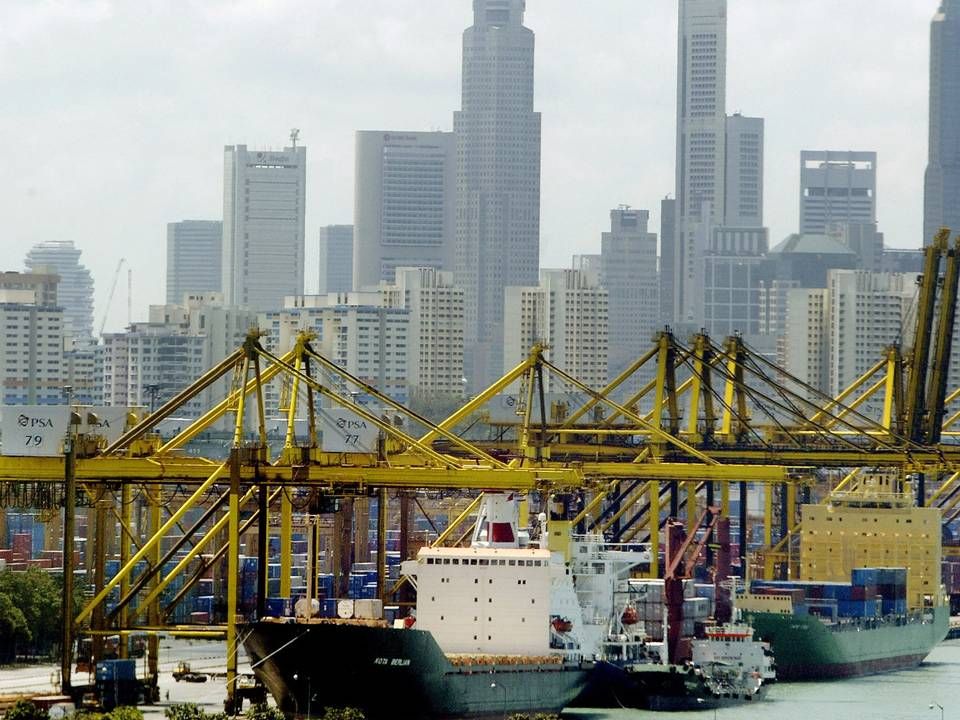Lloyd's Register: The technological revolution has only just begun

In 15 years the shipping industry will likely look very different than it does today in an age when digitalization has a decisive impact on our daily lives. A wave of new technologies have already begun to revolutionize the industry and will likely gain momentum towards 2030. If a carrier is not already on board with investigating new technological opportunities, now is the time to do so, and fast, says Jesper Aagesen, Area Consultancy Manager for Scandinavia and the Baltic at classification bureau Lloyd's Register Marine.
Try a free 40-day trial subscription to ShippingWatch
"It's important that the industry adapts. Partly, to comply with many of the upcoming environmental requirements but also to maintain its competitive edge, so that players can always be at the forefront and deliver the best product to end customers, who in turn also demand increasingly sustainable transport from carriers," he tells ShippingWatch and continues:
"It will benefit carriers, as their ships become more efficient this will translate to bottom line results. So it's a win-win situation for them."
In the past few years, many carriers have embraced the technological transition, for example by installing systems on their ships which can monitor and measure the performance of various devices on the ship and send data ashore for further analysis. It is also about big data, which is a kind of 'buzz word' in the industry today, Jesper Aagesen says.
Martin Stopford: Shipping's business model is outdated
"Many carriers have been doing this for some years, closely watching the correlation between their operations and performance. Many more will follow suit. Before, this monitoring was focused on fuel consumption, but in the long term it will also extend to other areas, whereby the maintenance of engines, equipment and other components on board can be performed via sensor technology. It will be much more widely used than it is today, but some companies have already started doing it," he says.
Will become more widespread
ShippingWatch has previously spoken to Paolo Tonon, CEO for Maersk Maritime Technology. He pointed to big data as one of the next big things in the industry, and the company has helped drive the development of more energy effective ships with its Triple-E container ships. Every day Maersk downloads 2 gigabytes of data from each ship, which is equipped with around 2,000 sensors and 450 kilometers of cable. Carrier Norden is also in the process of installing technology on board its fleet, according to its company magazine Norden News. New measuring equipment on both dry cargo and tanker ships will transfer data to the company every hour, so it will be possible to follow the individual vessel's fuel consumption performance. Initially it will monitor the product tankers, and by the end of 2016 the company expects to have the equipment installed on its 26 bulk carriers.
Although not all carriers are on board with the latest developments yet, the technological revolution is underway, explains Jesper Aagesen of Lloyd's Register Marine.
"Once the industry's first movers have developed or begin to develop more advanced products in close collaboration with equipment manufacturers, this will spread to the next tier of carriers. Typically, within a matter of years they begin to adopt some of the ideas already developed by other players."
Millions in EU funds to kickstart big data in shipping
In its report 'Global Marine Technology Trends 2030', Lloyd's Register Marine has recently identified eight technology trends which will come to play a crucial role in the shipping industry's future:
- Advanced materials, which make it possible to replace steel in selected locations on a ship, for example by using composite materials made by a 3D-printer.
- Big-data analysis, which ensures the discovery of new operation connections, via the input and processing of millions of data which become available with new sensors mounted on all moving parts.
- Robotics, will be used for traditional heavy lifting and inspecting spots out of human reach. Drones also fall under this category.
- Sensors, will be available for multiple purposes at a reasonable price. They can be used to communicate data between ships and land, or to monitor details in machinery and other components.
- Communication between ship and shore will become even more fluid while satellite data becomes much more accurate. However it will also raise issues of cyber security and increase costs to secure data.
- Shipbuilding, is becoming more automated, more integrated and increasingly reliant on software.
- Propulsion and power, with ships relying on new fuels such as LNG, hybrid technology, fuel cells, data-fuel engines and battery operation.
- Smartship, represents the essence of a fully digitalized and automatic ship.
Holistic shipyards
In 15 years, the traditional diesel engine will still play a significant role in shipping, according to Jesper Aagesen. However the demand for alternative fuels will increase, so that the industry can live up to the environmental requirements slated to take effect over the next decade, and those which are already in force. The major regulatory development are the new sulfur requirements which came into force for the Baltic and North Sea in 2015. In North America, new regulations mean fuel may only contain 0.1 percent sulfur. The EU will follow suit in 2020 imposing a maximum of 0.5 percent sulfur in fuel, while the rest of the world will apply the same measures in either 2020 or 2050.
Try a free 40-day trial subscription to ShippingWatch
"We're going to see the spread of liquefied natural gas (LNG) for some ship types, while methanol which Stena Line has begun to use on one ship could also be an option within certain niches. In the shortsea segment, we will come to see extensive hybrid operations, with a combination of batteries and either traditional diesel engines, LNG or pure electrical operations, where one charges the ship ashore either in port or at night."
Development in the yard sector will also be interesting to follow, he says, pointing ti increasingly automated and more advanced shipbuilding than today.
"The construction of increasingly advanced ships will demand more from shipyards and ship designers. They'll need to think in terms of system integration and a lot more holistically. Shipbuilding has traditionally divided construction areas, with one group focusing on hull design, another on steel structure, a third on the machinery and a fourth on the electrical work. This will be much more integrated in the future," says Jesper Aagesen.
Analyst: Shipping must let go of trade secrets
Related articles
Martin Stopford: Shipping's business model is outdated
For subscribers
Analyst: Shipping must let go of trade secrets
For subscribers
Singapore Port will support building of LNG vessels
For subscribers




















